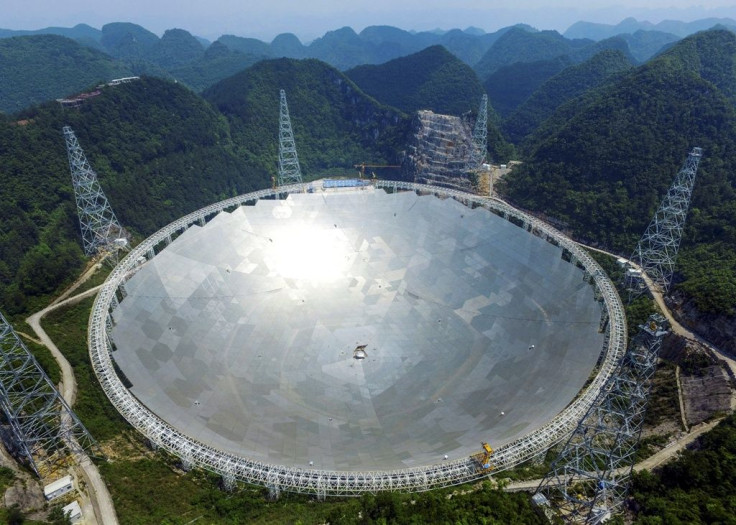China’s Alien-Hunting Radio Telescope Ready To Go Operational

The world’s largest radio telescope — built by China — is set to go operational in September, over two decades after it was first proposed. The telescope’s last of 4,450 panels was assembled Sunday.
The Five-hundred-meter Aperture Spherical Telescope took five years to build and China plans to use it to search for extraterrestrial life. The 1,640 feet diameter FAST can accommodate 30 football fields.
Scientists will kick off debugging and trial observation of the telescope, Zheng Xiaonian, deputy head of the National Astronomical Observation (NAO) under the Chinese Academy of Sciences, which built the telescope, told the official Xinhua News. The $180 million project has the ability to find “strange objects” for better understanding of the universe’s origin, Zheng said, adding that the radio telescope will be a global leader for next 10 to 20 years.
After the completion, the radio telescope will undergo further adjustment during the initial years, when Chinese scientists will use it for early-stage research. Following that, it will be open to scientists across the world, Peng Bo, director of the NAO Radio Astronomy Technology Laboratory, told Xinhua. Scientists can conduct observation in other cities such as Beijing, nearly 1,243 miles from the site of the telescope, Peng said.
President Xi Jinping has called on China to work toward becoming a space power. China is also planning to put a human on the moon by 2036 and the world’s second-largest economy is building a space station for which work has already begun.
Although China says its program is for peaceful purposes, the U.S. Defense Department has pointed out Beijing’s increasing space capabilities, saying it is carrying out activities aimed at preventing rivals from using space-based assets in a crisis, according to Reuters.
China is due to launch a “core module” for its first space station in 2018.
© Copyright IBTimes 2025. All rights reserved.






















